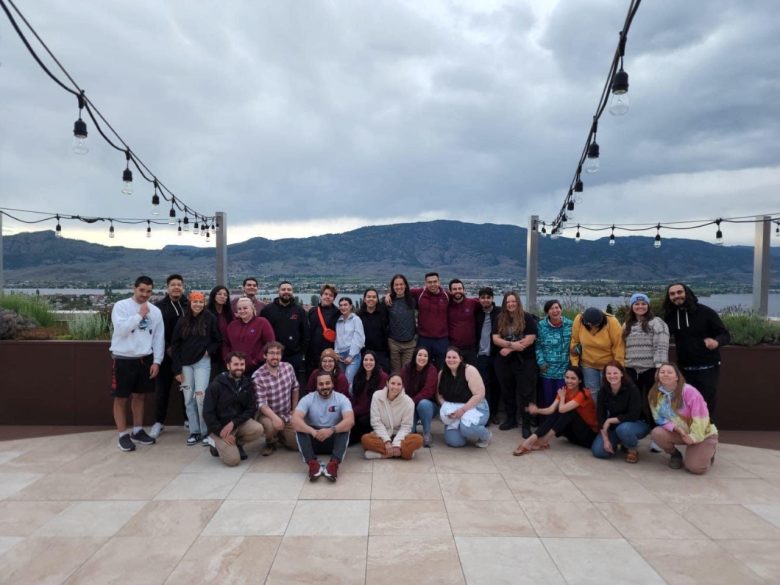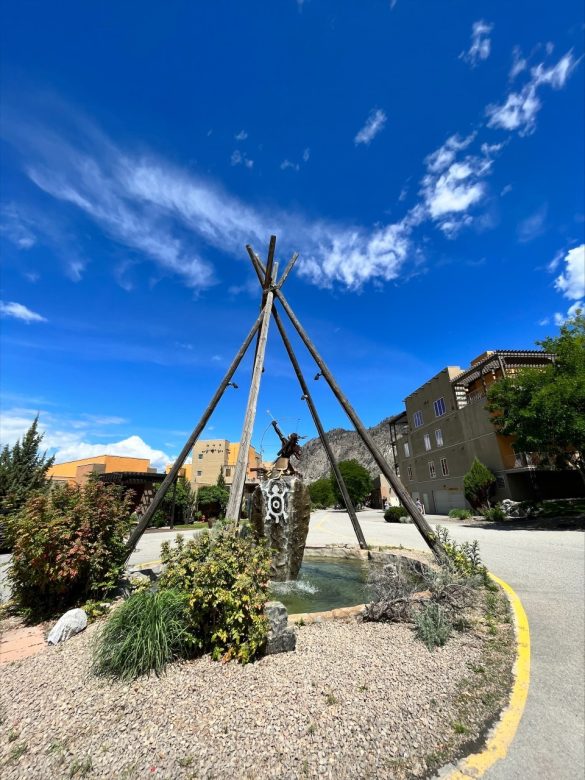Team August 9, 2022
Building Bridges Between Western Science, Indigenous Knowledge, and Clean Energy
By Payton Morrisseau, Outreach Assistant
Living alongside a vibrant river in Sagkeeng First Nation (meaning the mouth of the river in Anishinaabemowin, previously known as Fort Alexander Indian Reserve) in Manitoba, I had quite a strong and healthy relationship with the water and land as the importance of taking care of them were always ingrained into me. Growing up, I was extremely intrigued with the teachings of my culture and Mother Earth from my Kookums (grandmothers) and several other knowledge keepers.
Through those connections and teachings, I wanted to create positive change, so I joined a youth group created by me and other young people in Sagkeeng. My main involvement was the project called “Sagkeeng Youth Garden,” where we built two gardens located on both sides of the community. My favourite part of the project was finding ways to be efficient with our water and incorporating Anishinaabemowin in our planting process.
Throughout that journey, I was introduced to plenty of opportunities and community members as I was eager to seek more ways to better my community and self.
Here are three key lessons from the many that I have learned throughout my time as an Indigenous Outreach Assistant at IISD Experimental Lakes Area:
1. Importance of Indigenous Knowledge in Western Science
When I started working at IISD-ELA, I was excited to be working on the project “Sagkeeng Community Dialogue on Health and Environment.” Throughout the discussions with community members, I was able to get an understanding of the different ways of knowing and doing. Indigenous Knowledge has been developed from an understanding of nature gained from seeing and doing, as well as from knowledge that has been passed down and accumulated over thousands of years. Integrating Indigenous Knowledge into Western scientific approaches introduces many ways of doing and being that are just as important as Western Knowledge and offer a valid route for problem solving.

2. Recognizing the Opportunities to Learn and Create Positive Change
A week into my position at IISD-ELA, I was introduced to a program called Generation Power (GP). GP is an Indigenous Youth clean energy and career training program. Recognizing the opportunities that can come into fruition from this program I took a leap of faith, applied, and was accepted, and since September 2021, I have met plenty of amazing Indigenous youth all over Turtle Island, gotten to network, and learned about clean energy. With these teachings, I feel extremely inspired and excited to create positive change within my community.
3. How to Build Meaningful Relationships and Demonstrate Courage to Build Trust
My favourite part of this journey is the connections I was able to make as I had to get out of my shell to learn and speak with the Elders, Knowledge Keepers, youth, and all my relatives all over Turtle Island. During one of the projects I was working on, I met with an Elder in my community, and through hours of conversation we built a friendship. I see her at ceremonies and around the community, and we always stop to talk and show our care and support for one another.
The gratitude I’ve had over the past year working at IISD Experimental Lakes Area will be something that I’ll never forget, and I’m extremely grateful to work for one of the world’s most influential freshwater research facilities. As an Anishinaabe Kwe I recognize the importance of water and my responsibility to protect it, throughout my journey, all the teachings, and new relations that I’ve built I would like to keep working towards helping keep our waters clean. I am excited to see where this journey continues to take me; it has planted many seeds for me to water.
Miigwech.
